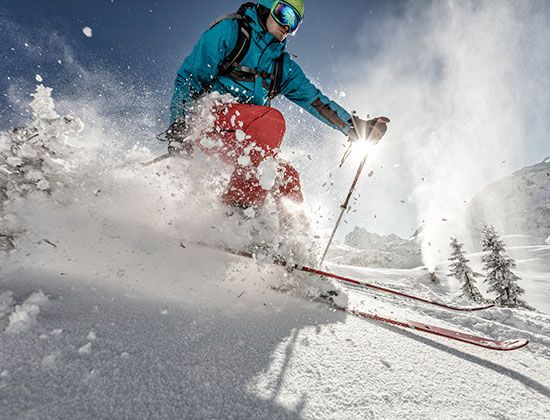Get fit to ski: preparation is key to injury prevention
Although skiing is widely seen as one of the most hazardous sporting activities in the world, the statistics indicate that it is a relatively benign sport to indulge in.
The huge advances in skiing equipment (particularly in boot technology) has played a considerable part in reducing on-piste injuries – one of the main reasons why skiing injuries have halved since the 1970s.
A report from Scotland estimates that the average skier has an injury every 447 days on the slopes. Obviously, head injuries are the biggest threat – but on that score, skiing is responsible for far less hospital admissions for head trauma when compared to more gentle pursuits such as cycling, football, basketball and even working out in the gym.
However, the fact can’t be ignored: when you spend a period of time on the slopes, you’re suddenly putting a huge amount of strain on parts of the body that get an easier ride for the rest of the year – particularly the thighs and calves, and especially the knees. Not only that, but the fact that skiing uses completely different muscle groups compared to other cardiovascular exercises means that if you don’t start warming those groups up now, you’re storing up a lot of potential pains and strains that can affect your ski break.
Hit the gym before the piste
Fortunately for skiing enthusiasts, a lot of gym machines and exercises have been lifted directly from skiing techniques, so transitioning from gym-fit to ski-ready doesn’t have to be an extreme measure.
The key muscle groups deployed in skiing are:
The quadriceps
It’s generally agreed upon that the quads are the most important muscles in skiing, as they have to work overtime to hold you in the correct position.
The hamstrings and glutes
You’re going to be spending a lot of time leaning forward in a crouched position – which is a pretty unnatural stance for most of your life – and your hamstrings and glutes will be responsible for keeping you in that shape.
The thighs
The inner thighs are responsible for keeping (your skis together, while the outer thighs keep you stable and help you steer.
The calves
The knees usually play a part in keeping you balanced and upright, but they are otherwise occupied in skiing, so the calves are forced to work overtime to keep you balanced.
The abdomen muscles
Again, due to being placed in an unnatural, bent position, the abs are deployed to keep the upper body balanced.
There are plenty of ski-specific exercise regimes available, so take time to evaluate your current workout programme. Now is the time to pinpoint what you’re doing already to keep those muscle groups in peak fitness, and to make sure you introduce new exercises to areas that aren’t getting worked on.


